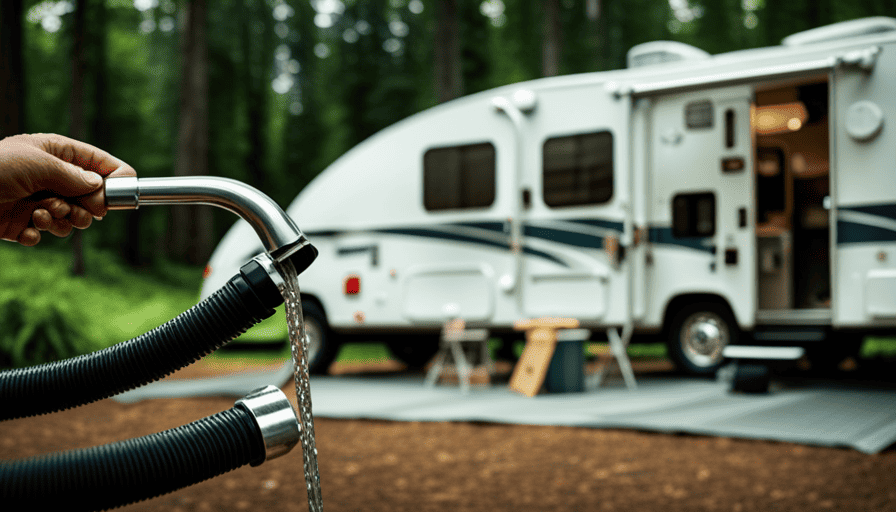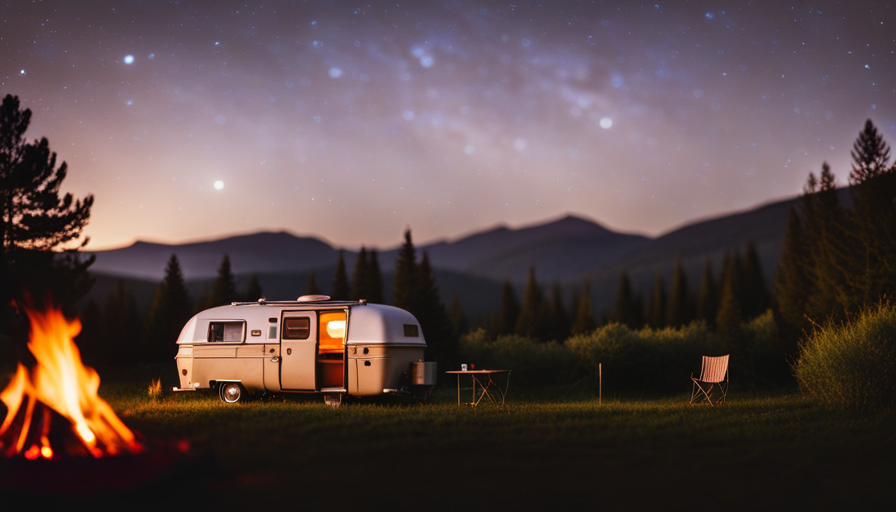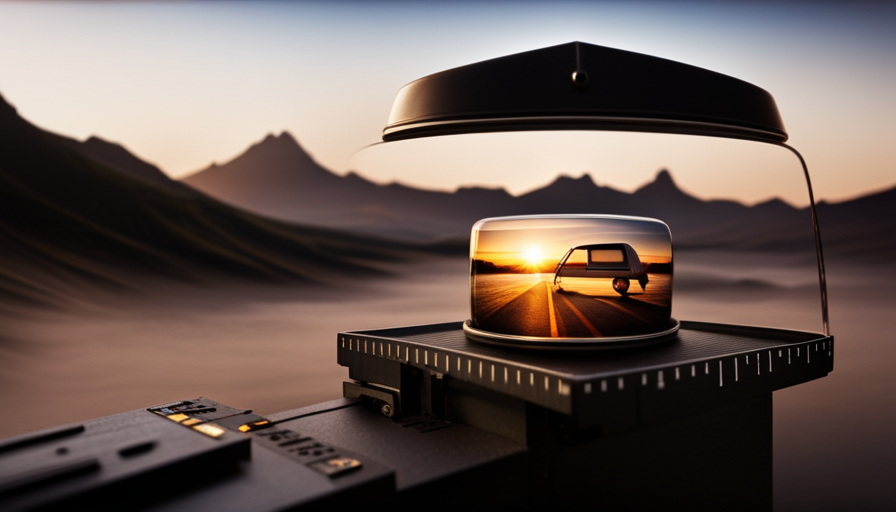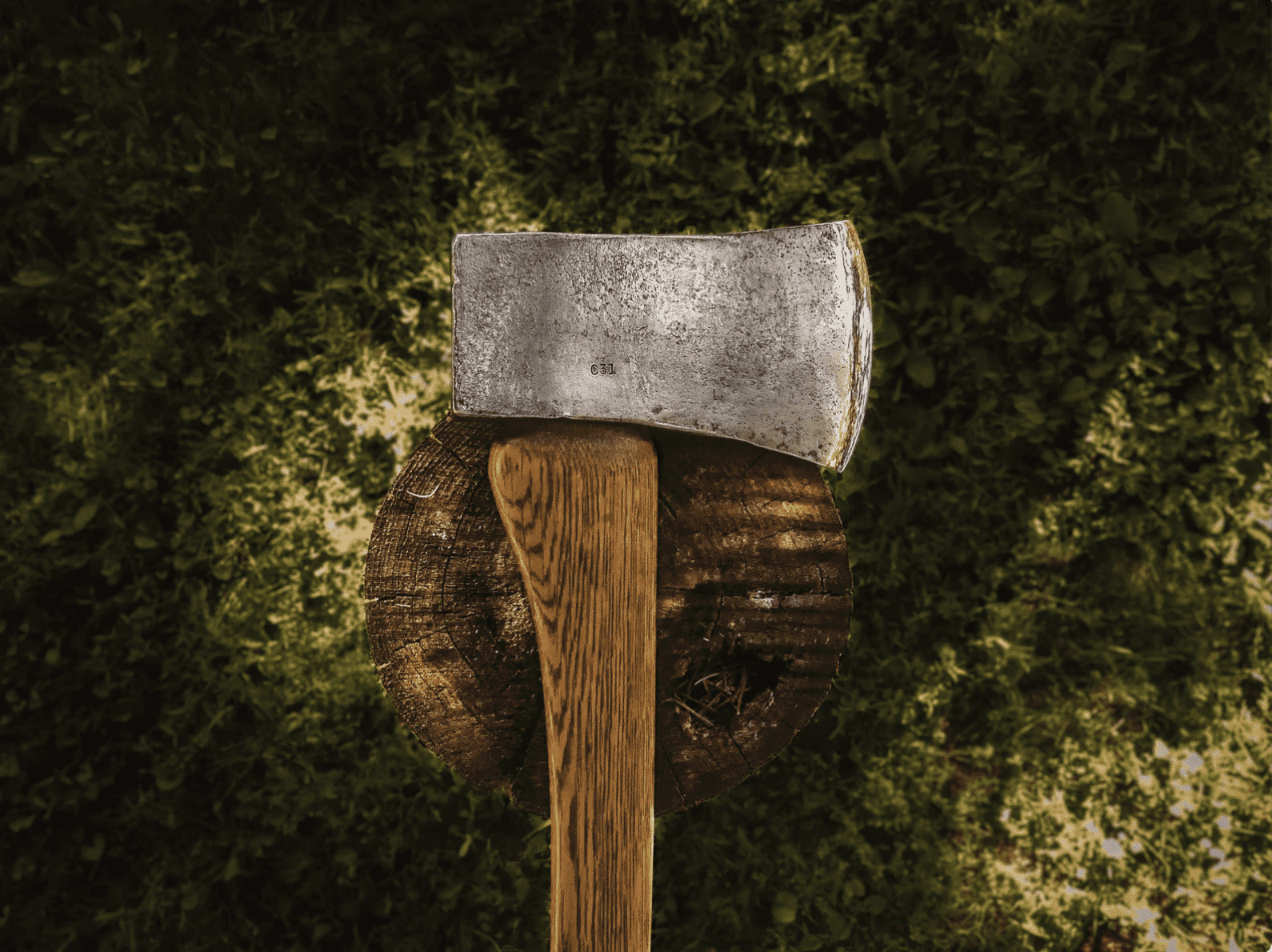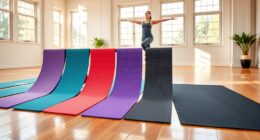Next to my RV, ready for another adventure, I was reminded of the importance of having water in my portable home. Water, crucial for survival, was about to flow through the camper, providing me with the essentials for a smooth journey.
In this step-by-step guide, I will show you how to hook water up to your camper, ensuring a smooth and hassle-free experience on the road.
Armed with the necessary tools and equipment, we will locate the water source at the campsite and connect the water hose to the camper’s water inlet. We will then turn on the water supply, checking diligently for any leaks. If applicable, we will prime the water pump and set up a water filter for added cleanliness. To protect your camper’s plumbing, we will use a pressure regulator, and I will also share some water conservation techniques.
By the end of this article, you will be equipped with the knowledge and skills to confidently hook water up to your camper, allowing you to fully enjoy your journey without worrying about your water supply.
So, let’s get started and make sure your camper is ready for the adventures that lie ahead!
Key Takeaways
- Choose the right water hose for RV use
- Regularly maintain and clean the water pump
- Locate the water source at the campsite or explore alternative options
- Take steps to connect the water hose securely and avoid leaks
Gather the Necessary Tools and Equipment
Now that you’re ready to hook water up to your camper, it’s time to gather all the tools and equipment you’ll need.
The first thing you’ll need is a water hose. It’s important to choose the right water hose for your camper. Look for one that’s specifically designed for RV use, as it’ll be able to handle the high water pressure often found at campsites. Make sure the hose is long enough to reach from the water source to your camper.
Next, you’ll need to properly maintain your water pump. This is an essential part of your camper’s water system, as it helps to pressurize the water and distribute it throughout your camper. Regularly check the pump for any signs of wear or damage, and replace it if necessary. It’s also important to clean the pump regularly to prevent any buildup of debris or sediment.
Now that you have all the necessary tools and equipment, it’s time to locate the water source at the campsite. This is where you’ll be connecting your water hose to get a supply of fresh water for your camper.
Locate the Water Source at the Campsite
First, find out where the campground’s water supply is, as 80% of campsites have access to fresh water. This is important because knowing the location of the water source will make it easier for you to connect your camper to it.
In some cases, the water source may be a faucet located near your campsite, while in others, it may be a central water station within the campground.
If the campground doesn’t have a water source or if you prefer an alternative water supply, there are a few options to consider. You can bring your own water in containers or jugs, or you can use a portable water tank that can be filled at a nearby water source. Just make sure to check with the campground rules and regulations regarding bringing in water from outside sources.
When camping, it’s important to conserve water as much as possible. This not only helps to minimize your impact on the environment but also ensures that you have enough water for your camping trip. Some tips for conserving water while camping include taking shorter showers, turning off the faucet while brushing your teeth, and using biodegradable soap when washing dishes.
Now that you know where the water source is and have considered alternative options, it’s time to connect the water hose to the camper’s water inlet.
Connect the Water Hose to the Camper’s Water Inlet
Once you’ve located the water source, it’s time to effortlessly attach the hose to your camper’s water inlet. This step is crucial for ensuring a smooth water connection and maintaining proper water pressure throughout your trip.
To connect the water hose to the camper’s water inlet, follow these simple steps:
-
First, make sure the water supply is turned off. This will prevent any water from flowing through the hose while you’re connecting it.
-
Next, take your water hose and find the threaded connector. This connector is typically located at the end of the hose and is used to attach it to the water inlet.
-
Now, grab the other end of the hose and insert it into the camper’s water inlet. Make sure it fits securely and tightly to avoid any leaks.
Once you’ve successfully connected the hose to the water inlet, you can move on to the next step of turning on the water supply and checking for leaks. This will ensure that everything is properly connected and functioning before you start using the water in your camper.
Turn on the Water Supply and Check for Leaks
To ensure a seamless water connection, all you need to do is flip the switch and watch as clean, refreshing water flows effortlessly into your camper. Can you feel the excitement of a hassle-free camping experience?
Before you turn on the water supply, it’s important to be aware of common water supply issues and have some tips for preventing water leaks.
Here are some common water supply issues to watch out for:
-
Low water pressure: If you notice weak water flow, check the water source and make sure it’s fully open.
-
Contaminated water: Always use a water filter to ensure the water you’re connecting to your camper is clean and safe for use.
-
Frozen pipes: In colder temperatures, insulate your water hose and pipes to prevent freezing and potential damage.
Tips for preventing water leaks:
-
Use a high-quality water hose specifically designed for RV use.
-
Check all connections for tightness and make sure there are no visible cracks or leaks.
-
Consider using a water pressure regulator to prevent excessive pressure that can cause leaks.
Once you’ve turned on the water supply and checked for leaks, it’s time to prime the water pump (if applicable).
Prime the Water Pump (if applicable)
Before you can enjoy a steady flow of water in your RV, it’s crucial to make sure that the water pump is properly primed, if it’s applicable to your camper.
The water pump is responsible for drawing water from the fresh water tank and pressurizing it throughout the camper’s water system. If you’re experiencing issues with your water pump or want to learn more about maintaining your camper’s water system, here are some helpful tips.
First, locate the water pump in your camper. It’s usually found near the fresh water tank or in a compartment. Next, check if the pump has a priming lever or button. If it does, move the lever into the prime position or press the button to activate the priming process.
Once the pump is primed, turn on the water supply to the camper. The pump should start running and pressurize the water system. Listen for any unusual sounds or vibrations, as these may indicate a problem with the pump. If everything sounds normal, you can then proceed to the next step of testing the water system in your camper.
By following these steps and troubleshooting any water pump issues, you can maintain a properly functioning water system in your camper.
Test the Water System in Your Camper
Now that you’ve successfully primed the water pump, you’ll want to make sure that your camper’s water system is fully functional to avoid any potential issues on your next adventure. Here’s how you can test the water system in your camper:
-
Turn on the water pump: Make sure the pump’s turned on and listen for any unusual noises. If you hear any grinding or rattling, there may be an issue with the pump that requires further inspection or repair.
-
Check water pressure: Turn on the faucets in your camper and see if the water pressure’s consistent. If the pressure’s too low, it could indicate a clogged filter or a problem with the pump. If the pressure’s too high, it could damage your plumbing system.
-
Inspect for leaks: Look for any signs of leaks around the water connections and fixtures. Common areas to check include the water heater, toilet, and shower. Fix any leaks immediately to prevent water damage.
-
Troubleshoot common issues: If you encounter any problems during the test, such as no water flow or inconsistent temperature, refer to your camper’s manual for troubleshooting tips. Common issues include air pockets in the water lines or a faulty pressure regulator.
Now that you’ve tested the water system, you can move on to setting up a water filter (optional) to ensure clean and safe water for your adventures.
Set Up a Water Filter (optional)
Once you’ve successfully tested the water system in your camper, consider adding a water filter for cleaner and safer adventures.
There are various water filtration options available for campers, each with its own benefits. Using a water filter can remove impurities and contaminants from the water source, ensuring that you have access to clean and safe drinking water during your trips.
One option is a carbon filter, which is effective at removing chlorine, sediment, and unpleasant tastes and odors from the water. Another option is a ceramic filter, which can remove bacteria and protozoa, providing an extra layer of protection against waterborne illnesses. Additionally, there are also combination filters available that incorporate both carbon and ceramic elements for comprehensive filtration.
Benefits of using a water filter include improved taste and odor of the water, as well as reducing the risk of consuming harmful bacteria or chemicals. It can also help extend the lifespan of your camper’s plumbing system by preventing sediment buildup.
To ensure the longevity of your camper’s plumbing system, it’s important to use a pressure regulator. This device helps protect your camper’s plumbing from high water pressure, which can cause damage and leaks. By regulating the water pressure, you can prevent costly repairs and maintain the integrity of your camper’s water system.
By adding a water filter and using a pressure regulator, you can enjoy cleaner water and protect your camper’s plumbing system, ensuring that your camping adventures are worry-free.
Use a Pressure Regulator to Protect Your Camper’s Plumbing
To ensure worry-free camping adventures, it’s crucial to safeguard your camper’s plumbing by using a pressure regulator. This small device helps control the water pressure coming into your camper, preventing any potential damage to the plumbing system.
Here are three important tips for maintaining a healthy water system in your camper:
-
Install a water pressure regulator: Begin by locating the water hookup on your camper. Attach the pressure regulator to the water source, ensuring it’s securely fastened. This will limit the water pressure to a safe level, protecting your pipes and fixtures from excessive force.
-
Monitor the pressure: It’s important to regularly check the pressure gauge on the regulator. Most campers require a pressure of around 40-50 psi (pounds per square inch). If the pressure exceeds this range, adjust the regulator accordingly to maintain optimal levels.
-
Inspect for leaks: Periodically inspect the plumbing system for any leaks or drips. Pay close attention to connections, joints, and faucets. Promptly repair any issues to prevent further damage and maintain a healthy water system.
By using a water pressure regulator to protect your camper’s plumbing and following these tips, you can ensure a smooth and worry-free camping experience. Practice water conservation techniques to further enhance your camper’s water system.
Practice Water Conservation Techniques
By implementing water conservation techniques, you can further enhance the functionality and sustainability of your camper’s plumbing system. Not only does water conservation help protect the environment, but it also ensures that you have enough water for your camping trip.
Here are some water conservation techniques that you can practice while using water in your camper:
-
First, be mindful of your water usage. Turn off the faucet when you’re not actively using water, such as while brushing your teeth or washing dishes. This simple step can save a significant amount of water over time. Additionally, consider taking shorter showers to conserve water.
-
Another water conservation technique is to collect and reuse water whenever possible. For example, collect the water used while rinsing fruits and vegetables in a bucket and use it to water plants or clean your camper. You can also use a dishpan or basin to wash dishes, instead of letting the water run continuously.
-
Lastly, fixing any leaks in your camper’s plumbing system is crucial for water conservation. Even small leaks can waste a substantial amount of water. Regularly inspect your plumbing system and promptly repair any leaks you find.
By practicing these water conservation techniques, you can minimize water waste and enjoy the benefits of a sustainable and functional camper’s plumbing system.
Now, let’s learn how to disconnect and store the water hose properly.
Disconnect and Store the Water Hose Properly
When it’s time to wrap up your camping trip, make sure you disconnect and store the water hose properly to ensure its longevity and prevent any potential leaks. Proper storage techniques are essential to maintain the functionality of your water hose for future use. Here is a step-by-step guide on how to disconnect and store the water hose:
-
Turn off the water supply: Before disconnecting the hose, make sure to shut off the water supply to prevent any water from flowing through the hose.
-
Release any remaining water pressure: Open the faucets in your camper to release any remaining water pressure within the hose.
-
Disconnect the hose: Unscrew the hose from the camper’s water intake valve carefully. Avoid twisting or bending the hose excessively to prevent damage.
-
Drain the hose: Hold the disconnected end of the hose up high to let any remaining water drain out completely.
-
Store the hose properly: Coil the hose neatly and place it in a storage bag or container to protect it from dirt and debris. Store it in a cool, dry place away from direct sunlight.
Properly storing your water hose not only ensures its longevity but also prevents water contamination by keeping it clean and protected from potential contaminants. Following these simple steps will help you maintain your water hose in good condition for your next camping adventure.
Frequently Asked Questions
How do I find a suitable water source at a campsite?
Finding a suitable water source at a campsite can be a crucial task. To ensure you have access to clean drinking water, start by scouting the area for natural water sources like rivers or lakes. Look for signs indicating potable water availability.
If no such source is available, it’s essential to bring your own water or use a water purification system. Best practices for water purification include using a filter or boiling water to kill any harmful bacteria or parasites.
Can I use a regular garden hose to connect to the camper’s water inlet?
Yes, you can use a regular garden hose to connect to the camper’s water inlet. However, it’s important to note that using alternative water sources may require additional precautions. Before connecting the garden hose, make sure to check the water source for any potential contaminants. Also, ensure that the water pressure is appropriate for your camper’s system to avoid any damage.
Now, let’s move on to discussing how to hook water up to a camper using a garden hose.
How do I know if there are any leaks in the water system of my camper?
To check for leaks in my camper’s water system, I first turn off the water supply. Then, I inspect all visible pipes, fittings, and connections for any signs of water or moisture.
I also check the water pump, faucets, and toilet for any leaks. If I suspect a leak, I can use a flashlight to search for any hidden leaks, such as under sinks or behind walls.
Additionally, I can use a pressure gauge to test the system for any drops in pressure, which could indicate a leak. Troubleshooting leaks involves identifying the source and repairing or replacing the faulty component.
What are some water conservation techniques I can practice while using water in the camper?
Water conservation techniques are essential when using water in a camper. One effective technique is to take shorter showers and turn off the water while lathering.
Another technique is to collect and reuse water for tasks like washing dishes or watering plants.
Installing water filters in the camper can also save water by reducing the need for bottled water.
Not only do these techniques help conserve water, but they also benefit the environment and save you money in the long run.
How should I properly disconnect and store the water hose after use?
To properly store and prevent water contamination, follow these steps:
- First, turn off the water supply and remove the hose from the camper’s connection.nn2. Drain any remaining water by lifting the hose vertically and allowing it to empty completely.nn3. Next, detach any additional fittings or attachments and rinse the hose with clean water.nn4. Coil the hose carefully, avoiding kinks or twists, and store it in a dry and clean location to prevent mold or damage.
Are the steps to hooking up water the same for all campers?
When it comes to hooking up water to a camper, the steps can vary based on the specific camper model and its plumbing system. While some campers may have a straightforward process involving connecting hoses and turning valves, others might require additional attachments or adjustments. Therefore, it is important to consult the camper’s manual to ensure proper and secure water connection.
Conclusion
After following these steps, I was able to successfully hook up water to my camper. It was a bit intimidating at first, but with the right tools and equipment, it turned out to be a straightforward process.
I made sure to locate the water source at the campsite and connect the water hose to my camper’s water inlet. I turned on the water supply and checked for any leaks, ensuring that everything was secure.
I also primed the water pump and set up a water filter to ensure clean water. Using a pressure regulator protected my camper’s plumbing, and I made sure to practice water conservation techniques.
Finally, I disconnected and stored the water hose properly for future use. Overall, I found that investigating the truth of the theory behind hooking up water to a camper made the process more enjoyable and relatable.

